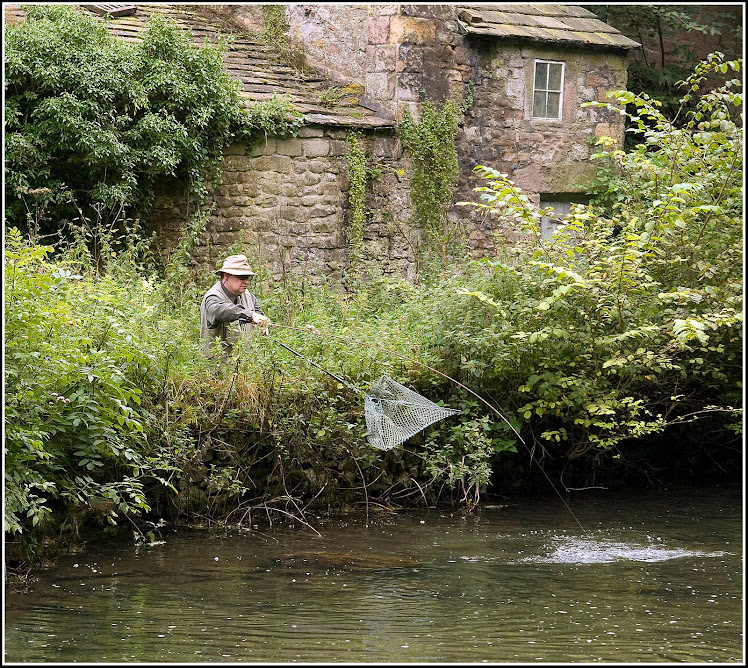On this theme, which really should become a natural part of any angler's strategy, at the risk of boring you with repetition here is another example of putting that principle to work.
Here is a lovely tangle made by the
river keepers when they put faggot bundles into the left side of the river, planted fleur-de-lys (flag iris) to consolidate the bank and so made some extra habitat, with a good flow bringing a constant stream of food to the fish that decide to take up home within its secret intricacies. The tiny fish can live securely in the little gaps between the twigs and branches in the faggots, whilst the bigger fish can hang out a little further (and so get the first pickings of the food) but instantly disappear under the faggot bundles at the first sign of danger from above.
So here is a great spot to "Fish where the fish are". The faggots here are made of live willow and willow being so tenacious of life has made roots and sent out shoots afresh with new leaves. Eventually this area will be canopied by overhanging willow fronds and so become even more attractive to the fish.
Attractive to the fish usually means a little bit harder casting and fishing for the dry fly angler, but what delightful rewards await the one who is prepared to risk all by sending the fly over to visit the home of Mr or Mrs Trout!
Not the biggest trout in the river but just look at its fantastic condition! That constant food source, which can be partaken of with very little expended energy, has been well used and so may it continue. River keepers eh?
Regular Rod

















